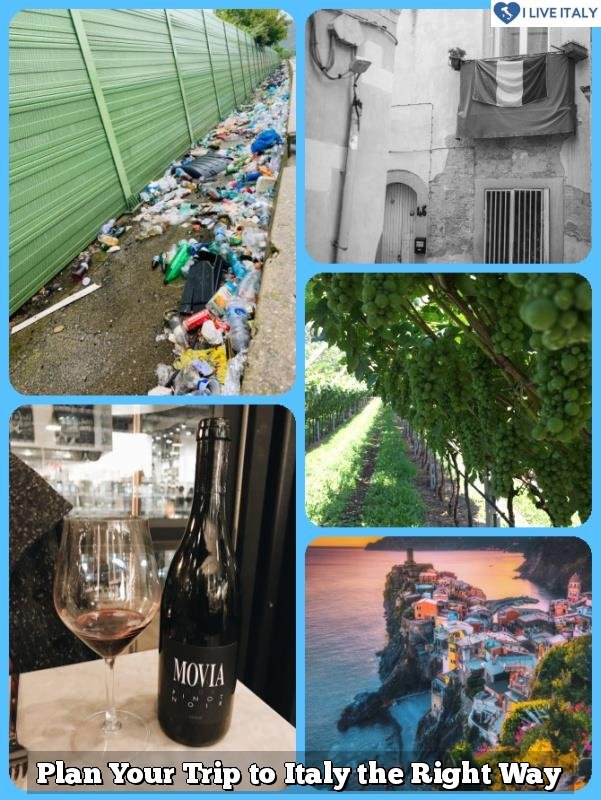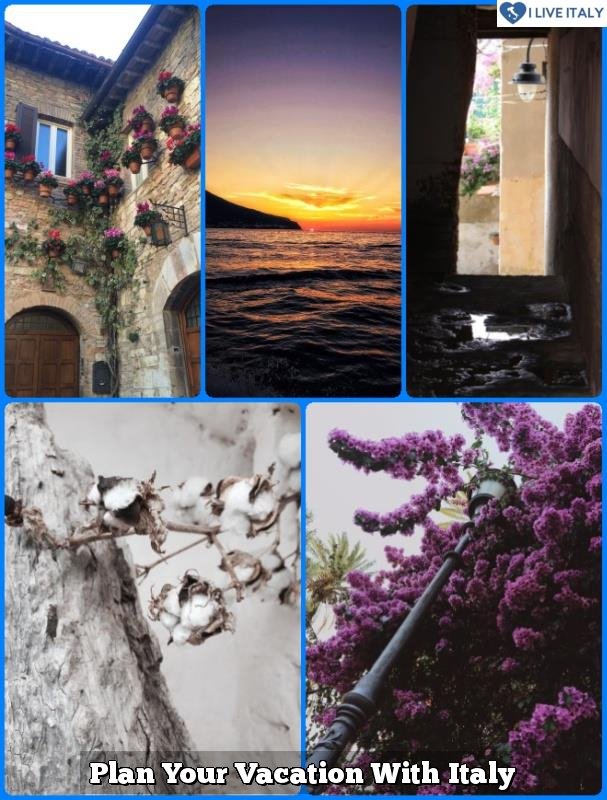Are you wondering how to plan travel Italy Germany? Planning a trip to Italy and Germany can be an exciting but daunting task. These two countries offer a rich cultural heritage, stunning landscapes, and vibrant cities that make for an unforgettable travel experience. In this article, we will provide you with a comprehensive guide on how to plan your trip to Italy and Germany, covering everything from researching destinations and budgeting to transportation options and accommodation choices.
When planning your trip to Italy and Germany, it is essential to start by researching the must-visit sites and attractions in both countries. From the ancient ruins of Rome to the picturesque German countryside, there are countless places to explore.
Once you have identified these destinations, you can then move on to budgeting and financial planning for your trip. This will ensure that you have a clear understanding of how much your journey will cost and allow you to save accordingly.
Transportation is another crucial aspect of planning your travels in Italy and Germany. Whether you prefer trains, buses, or rental cars, each country offers different options for getting around. Additionally, understanding the language barrier and cultural differences in both nations will help you navigate with ease.
By creating a flexible itinerary that balances must-see sights with off-the-beaten-path gems, you can make the most of your time in each country. Finally, understanding visa requirements and considering safety and health considerations are vital for a smooth journey.
Researching Destinations
Exploring Italy
Italy is a country rich in history, art, and culture, offering a plethora of must-visit sites and attractions. Rome, the capital city, is home to iconic landmarks such as the Colosseum, the Vatican City, and the Trevi Fountain.
Visitors can also explore the ancient ruins of Pompeii or take a gondola ride through the picturesque canals of Venice. For art enthusiasts, a visit to Florence is essential to see renowned works at the Uffizi Gallery and Michelangelo’s masterpiece, David.
Discovering Germany
Germany’s diverse landscapes and vibrant cities offer an array of attractions for travelers. Berlin, the capital city, boasts a mix of modern architecture and historic landmarks like the Brandenburg Gate and remnants of the Berlin Wall. The scenic Romantic Road takes visitors through charming towns and castles in Bavaria, while nature lovers can explore the Black Forest or relax along the Rhine River. Beer aficionados should not miss out on visiting Munich during Oktoberfest for an unforgettable cultural experience.
Planning Your Itinerary
When researching destinations in Italy and Germany, it’s important to consider the interests of all travelers in your group. Whether you’re drawn to ancient history, breathtaking landscapes, or culinary delights, crafting a balanced itinerary that incorporates famous sights as well as lesser-known gems will provide a well-rounded experience. Take into account travel times between destinations and factor in relaxation days to avoid burnout.
By carefully researching must-visit sites and attractions in Italy and Germany, travelers can create an itinerary that ensures they make the most of their time exploring these two incredible countries.
Budgeting and Financial Planning for the Trip
When planning a trip to Italy and Germany, one of the most crucial factors to consider is budgeting and financial planning. From accommodations to dining to sightseeing, it’s essential to set a realistic budget and stick to it in order to make the most out of your travel experience.
Determining Your Budget
The first step in financial planning for your trip is determining how much you can afford to spend. Consider all aspects of your trip, including airfare, accommodations, meals, transportation, activities, and souvenirs. Research the average costs in Italy and Germany to get an idea of what to expect. Once you have a rough estimate, factor in some extra cushion for unexpected expenses.
Money-Saving Tips
There are plenty of ways to save money while traveling in Italy and Germany. Consider traveling during the off-peak season when airfare and accommodations tend to be cheaper. Take advantage of public transportation instead of taxis or rental cars. Look for free or discounted attractions and activities, such as museums with free admission days or walking tours. Additionally, consider purchasing city passes or discount cards that offer savings on multiple attractions.
Managing Your Finances Abroad
It’s important to plan how you will access and manage your finances while abroad. Notify your bank of your travel plans so they don’t flag any transactions made in Italy or Germany as suspicious.
Research the best options for foreign transaction fees and currency exchange rates when using credit cards or ATMs overseas. It’s also a good idea to have a mix of payment methods, such as credit cards, debit cards, and cash, for added flexibility during your travels.
By carefully considering these budgeting and financial planning tips for traveling in Italy and Germany, you can ensure a more enjoyable and stress-free vacation without breaking the bank.
Transportation
When planning a trip to Italy and Germany, one of the essential aspects to consider is transportation. Both countries offer various options for getting around, each with its own advantages and disadvantages. It’s crucial to research and understand these options to make the most of your travel experience.
In Italy, the public transportation system is highly efficient, with an extensive network of trains, buses, and trams connecting major cities and tourist destinations. The Italian rail network, in particular, is known for its reliability and convenience, making it an excellent choice for traveling between cities.
On the other hand, Germany also boasts a well-developed public transportation system, including high-speed trains (ICE), regional trains (RE), buses, and trams. These options provide easy access to popular attractions and off-the-beaten-path gems throughout the country.
While public transportation is a convenient way to explore both Italy and Germany, renting a car can also be a viable option for travelers who prefer more flexibility in their itinerary. Renting a car allows you to visit smaller towns and rural areas that may not be easily accessible by public transit. However, it’s important to familiarize yourself with local traffic rules and parking regulations before embarking on a road trip.
| Country | Transportation Options |
|---|---|
| Italy | Trains (Trenitalia), Buses (ATAC), Trams |
| Germany | High-speed trains (ICE), Regional trains (RE), Buses |
Accommodation Options
Traveling to Italy and Germany offers an array of accommodation options, from luxurious hotels to budget-friendly hostels and unique alternative lodging. When planning your trip, it’s essential to consider your budget, travel style, and preferred amenities to find the best accommodation for your stay. Here’s a guide on how to plan travel in Italy and Germany by exploring different accommodation options.
Hotels in both Italy and Germany range from well-known international chains to boutique hotels and family-run guesthouses. Depending on the city or region you’re visiting, you can find a variety of accommodations that cater to different budgets and preferences. Researching online reviews and checking hotel booking platforms can help you compare prices, locations, and facilities. It’s recommended to book in advance during peak tourist seasons to secure the best rates and availability.
For budget-conscious travelers, hostels are an excellent option for affordable yet comfortable accommodation in Italy and Germany. Many hostels offer private rooms along with dormitory-style accommodations, providing a social atmosphere for meeting fellow travelers. Additionally, many hostels organize city tours, pub crawls, and other activities for guests to explore the area while making new friends.
If you’re looking for a unique experience during your travels, consider alternative lodging options such as vacation rentals, guesthouses, or even farm stays. These options allow you to immerse yourself in local culture while staying in charming villages or countryside settings. Websites like Airbnb or Vrbo provide a wide selection of alternative accommodations suitable for solo travelers, families, or groups of friends.
| Accommodation Type | Description |
|---|---|
| Hotels | Range from luxury chains to boutique hotels; book in advance during peak seasons. |
| Hostels | Affordable accommodations with social atmosphere; ideal for budget travelers. |
| Alternative Lodging | Vacation rentals, guesthouses, farm stays; unique experiences suitable for different travel styles. |
Navigating the Language Barrier and Cultural Differences
When traveling to multiple countries like Italy and Germany, it’s important to be prepared for the potential language barriers and cultural differences you may encounter. Here are some tips on how to navigate these challenges during your trip:
1. Learn Basic Phrases: Before traveling to Italy and Germany, it’s helpful to learn some basic phrases in the local languages. Simple greetings, expressions of gratitude, and asking for directions can go a long way in bridging the language gap and showing respect for the local culture.
2. Cultural Etiquette: Each country has its own set of cultural norms and etiquette. Researching and understanding these customs can help you avoid unintentional faux pas during your trip. For example, in Germany, it is customary to greet with a handshake, while in Italy, a kiss on each cheek is a common way of greeting friends.
3. Embrace Differences: Embracing the differences between your own culture and that of Italy and Germany can enrich your travel experience. Be open-minded, curious, and respectful of the local customs, traditions, and way of life.
4. Use Technology: In this digital age, there are numerous apps and translation tools available that can help bridge the language barrier while traveling. Consider downloading language translation apps or using navigation apps to make getting around easier.
Remember that understanding and respecting the cultural differences while navigating the language barrier can greatly enhance your travel experience in Italy and Germany.
Creating a Flexible Itinerary
When planning a trip to Italy and Germany, it’s important to create a flexible itinerary that allows you to balance must-see sights with off-the-beaten-path gems. This will ensure that you make the most of your time in both countries and have a well-rounded travel experience. Here are some tips on how to plan your itinerary:
1. Research popular tourist attractions: Before you travel to Italy and Germany, research the must-see sights in each country. For example, in Italy, you might want to visit famous landmarks such as the Colosseum in Rome, the canals of Venice, and the Leaning Tower of Pisa. In Germany, you might be interested in exploring historic sites like the Brandenburg Gate in Berlin, the Neuschwanstein Castle, and the Romantic Road scenic route.
2. Seek out hidden gems: In addition to visiting popular tourist attractions, consider adding some off-the-beaten-path destinations to your itinerary. For example, in Italy, you could explore the lesser-known towns of Matera or Alberobello in Southern Italy or visit the picturesque villages of the Amalfi Coast. In Germany, consider taking a detour to explore the beautiful Bavarian countryside or visiting charming towns like Rothenburg ob der Tauber.
3. Be open to spontaneous experiences: While it’s important to have a rough itinerary in place, leave room for spontaneity during your trip. Allow yourself to get lost in a new city or stumble upon unexpected hidden gems while exploring. This flexibility will allow you to fully immerse yourself in the culture and atmosphere of both countries.
By creating a flexible itinerary that balances must-see sights with off-the-beaten-path gems in Italy and Germany, you’ll be able to make the most of your trip and create unforgettable memories.
Packing Tips and Travel Essentials for Italy and Germany
When planning a trip to Italy and Germany, it’s important to consider the packing essentials that will make your journey more enjoyable and stress-free. To ensure you have everything you need for your travels, it’s important to create a packing list based on the activities you plan to engage in and the weather conditions of your destinations.
It’s always a good idea to pack versatile clothing items that can be layered for changing weather conditions. In both Italy and Germany, the weather can vary depending on the region and time of year, so packing items that can be easily mixed and matched is essential. Additionally, comfortable walking shoes are a must, especially if you plan on exploring historical sites, cobblestone streets, or hiking through natural landscapes.
In terms of travel essentials, be sure to pack adapters for electronic devices as the electrical outlets in Italy and Germany may differ from those in your home country. It’s also recommended to bring a universal charger for all your electronic devices. Don’t forget to include any necessary medications, as well as copies of important travel documents such as passports, visas, and travel insurance information.
Lastly, when packing for Italy and Germany, consider any specific items you may need for activities unique to each country. For example, if you plan on visiting the beach in Italy or hiking in the Alps in Germany, be sure to pack accordingly. By carefully considering your clothing needs and essential items before your trip, you’ll be better prepared for an unforgettable journey through Italy and Germany.
Understanding Visa and Entry Requirements for Both Countries
When planning a trip to Italy and Germany, it is essential to understand the visa and entry requirements for both countries. Depending on your nationality, you may or may not need a visa to enter Italy and Germany for tourism purposes. It is important to research the specific entry requirements for each country well in advance of your trip.
For travelers from the United States, Canada, Australia, and many other countries, a tourist visa is not required for trips to Italy and Germany that are 90 days or less. However, it is important to check the current visa policy as it can change. If you plan to stay longer than 90 days or if your nationality requires a visa for short-term visits, be sure to apply for the appropriate visas in advance.
In addition to visa requirements, both Italy and Germany have specific entry requirements related to passport validity. Most travelers will need a passport that is valid for at least three months beyond the date of their intended departure from the Schengen area which covers both Italy and Germany. Be sure to check your passport’s expiration date and renew it if necessary before your trip. Understanding these requirements will ensure a smooth entry into both countries during your travels.
Safety and Health Considerations for Traveling in Italy and Germany
In conclusion, planning a trip to Italy and Germany can be an exciting and rewarding experience, but it requires careful consideration and preparation. By following the tips and guidelines outlined in this article, travelers can make the most of their journey while staying safe and healthy.
When planning a trip to Italy and Germany, it is essential to research must-visit sites and attractions in both countries. Whether it’s exploring historical landmarks, enjoying the local cuisine, or taking in the natural beauty of the landscapes, having a well-planned itinerary will help ensure that travelers make the most of their time in each destination.
Additionally, understanding visa and entry requirements for both countries is crucial to avoid any unforeseen complications during travel. It’s important to stay updated on the latest travel advisories and health considerations as well, especially when visiting multiple destinations. By taking these factors into account, travelers can enjoy a smooth and fulfilling experience in Italy and Germany.
Frequently Asked Questions
Is It Cheaper to Go to Italy or Germany?
The cost of traveling to Italy or Germany depends on various factors such as your departure city, time of year, and travel preferences. Generally, transportation and accommodation may be cheaper in Germany, but Italy offers a diverse range of affordable options as well.
What Is the Best Way to Plan a Trip to Italy?
The best way to plan a trip to Italy is to start with thorough research on the places you want to visit, the activities you want to do, and the local culture and customs. It’s also important to create a flexible itinerary that allows for spontaneity and exploration.
Can You Go to Italy From Germany by Train?
Yes, you can travel from Germany to Italy by train. There are several train routes connecting major cities in both countries, offering scenic views and convenient travel options for those who want to experience Europe’s efficient railway system. Booking tickets in advance can help secure reasonable fares for this journey.

I’m a passionate traveler, writer, and Italophile. My fascination with Italy’s history, art, and culture has led me on countless adventures across the Italian landscape. Through “I Live Italy,” I share my love for this extraordinary country and aims to inspire others to explore its boundless beauty.





